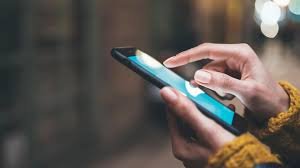
When you travel abroad, your smartphone becomes your most important travel tool. It helps you stay in touch with family and friends, find locations, take photos, check flight details, and even manage your money. However, using your phone in another country can also be risky. Hackers, data thieves, or even a lost phone can cause serious problems if your data is not protected. That’s why securing your phone before you travel internationally is very important.
Public Wi-Fi in airports, hotels, and cafes is often unsecured, making it easy for cybercriminals to steal your information. Tourists are also at a higher risk of phone theft, especially in crowded places. In some countries, fake Wi-Fi networks or malicious apps can trap users and steal personal details. There’s also the chance that customs officers may check your phone at the border, so having private data stored on your device could lead to trouble. Knowing all these risks, let’s look at some simple steps to secure your phone before you travel.
First, always backup your phone’s data before your trip. Backing up protects your contacts, photos, videos, and documents in case your phone is lost or damaged. If you use an Android phone, you can use Google Drive or your phone brand’s cloud backup service. Go to Settings > Google > Backup > Back up now to save your data. For iPhone users, use iCloud or iTunes. Simply go to Settings > [your name] > iCloud > iCloud Backup > Back Up Now. This way, you can recover your important information later if something goes wrong.
Next, update your phone’s software and apps. Before you travel, check if your phone’s operating system is up to date. Updates fix security bugs and protect your device from viruses or hackers. On Android, go to Settings > System > System update. For iPhone, go to Settings > General > Software Update. Also update your important apps like banking, maps, messaging, and travel apps to their latest versions.
Use a strong lock screen to keep your phone safe. A simple PIN like 1234 or your birthday is easy to guess, so set a strong password or a 6-digit PIN. Many phones also support biometric options like fingerprint or Face ID. These add extra safety and are quick to use. You can find this feature in your phone’s security or Face ID & Passcode settings.
Another important step is enabling the “Find My Phone” feature. This tool helps you locate your phone if it gets lost or stolen. It also allows you to lock it remotely or erase all data. Android users can activate it by going to Settings > Security > Find My Device. iPhone users can enable Find My iPhone in Settings > [your name] > Find My > Find My iPhone. Make sure location services are also turned on to use this feature properly.
When sending private information, always use encrypted messaging apps. Apps like WhatsApp, Signal, and Telegram offer end-to-end encryption, meaning no one can read your messages except you and the person you’re chatting with. Avoid sending sensitive details through regular SMS or unsecured apps, especially while connected to public networks.
One of the most effective ways to secure your internet connection abroad is by using a VPN (Virtual Private Network). A VPN encrypts your online traffic, hides your location, and keeps hackers from spying on you when you’re using public Wi-Fi. Download a trusted VPN app like NordVPN, ExpressVPN, Proton VPN, or Surfshark before you travel. Always connect your VPN when using open or free Wi-Fi networks in hotels or airports.
Turn off automatic Wi-Fi and Bluetooth connections. Many phones automatically connect to saved or open networks, which can be risky. Hackers sometimes create fake networks with names like “Free Airport Wi-Fi.” To prevent this, go to your Wi-Fi settings and disable auto-connect features. Keep Bluetooth turned off unless you are actively using it.
Avoid using public USB charging ports. In airports or malls, hackers may install malware through USB cables—a trick known as “juice jacking.” Instead, carry your own charger and plug, or use a portable power bank. You can also use a USB data blocker, which allows charging but blocks data transfer to unknown devices.
Clear out personal data that you don’t need on your trip. Before you fly, check your phone for old photos, banking information, sensitive emails, or documents. Store these on a cloud service like Google Drive, iCloud, or an external USB drive. This way, even if someone accesses your phone, they won’t find anything valuable.
Enable two-factor authentication (2FA) on all your important accounts like your email, social media, and online banking. 2FA adds another security step by asking for a special code along with your password. Use an app like Google Authenticator or Authy for better protection than text message codes.
To keep track of all your passwords securely, use a password manager. These apps help you create and save strong, unique passwords for each account. Options like LastPass, 1Password, Bitwarden, and Dashlane are great for managing your logins. Avoid writing passwords down or using the same one for multiple accounts.
Some countries have strict digital laws, and border officers may ask to inspect your phone. It’s smart to research local laws before you travel. To stay safe, use a travel phone with minimal personal data or log out of sensitive accounts while crossing borders. Store important info in the cloud and sign in only when needed.































